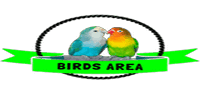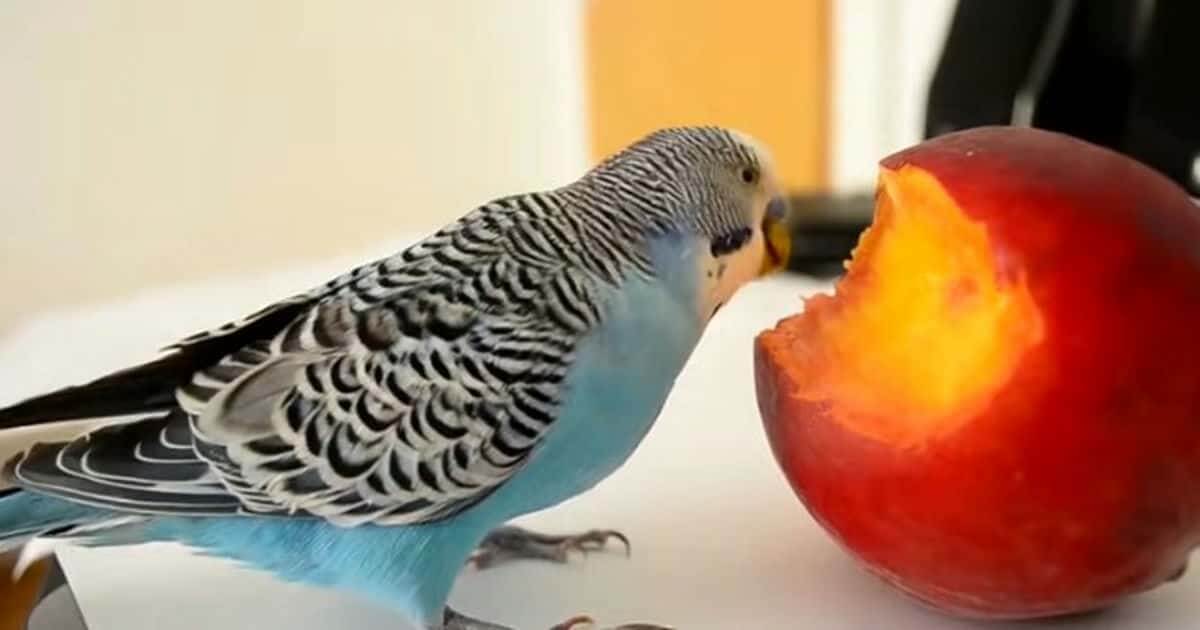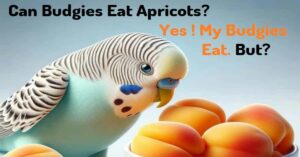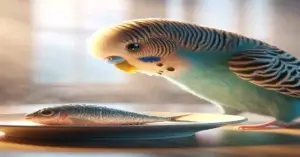How Many Times Do Budgies Eat A Day? The Optimal Feeding Schedule
Hey there, Thinking about getting a budgie or maybe you’ve already got one? It’s super important to know what they should eat. Good food keeps them happy and healthy. Now, you might wonder, “how many times do budgies eat a day?”
Well, budgies like to eat multiple times a day. They usually have about 6 to 8 small meals. They’ve got quick metabolisms and prefer nibbling little and often, rather than chomping down big meals.
But hey, you’re in luck today. I’m here to give you the real deal on how often to feed your feathery pal. It’s all about making sure they get everything they need to be chirpy and cheerful.
Let’s dive in and find out more about feeding our budgie buddies.
How Many Times Do Budgies Eat A Day?

I mentioned above, on average, budgies eat about 6 to 8 times daily, reflecting their natural inclination for frequent, small meals.
Understanding their dietary needs is crucial for their health and well-being.
Frequency of Meals
Budgies, with their fast metabolism, require food frequently throughout the day. A typical routine includes a substantial breakfast and several smaller meals.
Main Meal in the Morning
Just like us, budgies need a hearty breakfast. In the wild, they’re busy searching for food in the early hours.
At home, try to mimic this by serving a tablespoon of high-quality seed or pellet mix first thing in the morning. They packed with vitamins, minerals, and proteins. So, this is their main source of energy for the day.
Snacks and Treats
Budgies benefit from having snacks and treats throughout the day. These can include fresh fruits, vegetables, and small portions of millet sprays. These supplementary items provide additional nutrients and mental stimulation for the birds.
Avian veterinarians say offering 1-2 tablespoons of fresh fruits and vegetables daily can contribute to a well-rounded diet for budgies.
Water Availability
Budgies need constant access to fresh water. They drink often, and not having enough water can cause health issues. Make sure you’re changing their water every day and keeping an eye on how much they drink.
The Correlation Between Age And Feeding Schedule
The feeding schedule for budgies can vary depending on their age:
- Baby budgies (up to 4-6 weeks old): Baby budgies have different dietary requirements than adult budgies. They must be fed more frequently, typically every 2-3 hours. A mixture of hand-feeding formula and soft foods such as mashed fruits and vegetables is usually recommended.
- Young budgies (4-6 weeks to 6 months old): Their feeding frequency decreases slightly as budgies grow. They must still be fed multiple times daily, usually 3-4 times, to support their growth and development. Combining high-quality pellets, seeds, and fresh produce can meet their nutritional needs.
- Adult budgies (6 months and older): Adult budgies typically eat 2-3 times a day. Providing a balanced diet of pellets, seeds, and fresh fruits or vegetables is vital to ensure they receive all the necessary nutrients. Clean water should be available at all times.
How Much Food Should A Budgie Eat A Day?

Budgies should eat a small amount of food throughout the day, with their main meal in the morning and additional snacks in the afternoon. Monitoring their intake to prevent overeating and maintaining a balanced diet for these delightful birds is essential.
Let’s explore how much food a budgie should eat daily.
Factors To Consider
When determining how much food a budgie should eat in a day, there are a few factors to consider. These include:
- Age: Young budgies, still growing, need more food than the grown-ups.
- Activity Level: A super active budgie will burn more energy, so need more food.
- Size: Bigger budgies might need slightly more food than their smaller pals.
- Dietary Needs: A mix of seeds, pellets, veggies, and occasional fruit treats keeps them healthy.
Portion Size Guidelines
To ensure your budgie is getting the right amount of food, consider the following portion size guidelines:
- Seeds: Offer approximately one to two teaspoons of seed mix per budgie daily. Think about a blend of millet, canary seeds, flax seeds, pumpkin seeds, a bit of sunflower seeds, etc. Seed ensures they receive essential nutrients.
- Pellets: Provide a small portion of pellets, around one to two tablespoons, alongside the seed mix. These pellets contain essential vitamins and minerals for optimal nutrition.
- Vegetables and Fruits: Offer one to two tablespoons of fresh vegetables and fruits per budgie daily. Ensure there is variety in their diet, including leafy greens, bell peppers, chopped spinach, carrot bits, apple pieces, and occasionally a slice of banana. Avoid toxic foods like avocado and chocolate.
- Treats: Offer sparingly small treats, such as millet sprays or small pieces of whole grain bread, to add excitement to their diet. Limit the treats to maintain a balanced diet.
Remember, these portion size guidelines are approximate and may vary depending on your budgie’s needs. Observe their eating habits and adjust the portions to prevent overfeeding or underfeeding.
Should I Leave Food In My Budgie’s Cage All Day?

Hey there, Budgie Owners, Did you know it’s a good idea to leave food in your budgie’s cage all day? But, of course, it’s all about what kind of food you leave out.
Always Available: Water and the Basics
Make sure your budgie always has fresh water and a certain amount of good seed mix or pellets. Budgies love to nibble on and off during the day, so they should always have something to peck at.
Be Careful with Fresh Stuff
Now, when it comes to fresh fruits and veggies, you’ve got to be a bit more careful. Leave these in the cage only for a few hours. Why? Because they can go bad and grow bacteria – yuck.
Treats: A Little Goes a Long Way
Treats are great, but only in small doses. Don’t leave treats, especially sugary or fatty ones, in the cage all day. It’s like candy for kids – nice in small amounts but not too much.
Keep It Clean and Fresh. It’s super important to regularly check and refill their food and water. And don’t forget to clean those containers every day to keep things hygienic.
This way, your budgie always has access to the food it needs without overeating. Plus, keeping their space clean is a big part of keeping them healthy and happy.
Common Budgie Feeding Problems And Overcome Process

Feeding budgies (parakeets) requires attention to their nutritional needs and habits. Here are some common feeding problems and tips on how to overcome them:
| Common Budgie Feeding Problems | Overcome Process |
|---|---|
| Selective Eating | Rotate food varieties. Introduce new foods gradually. Ensure a balanced diet. |
| Seed Addiction | Gradually reduce seed intake. Introduce pellets and fresh foods. Patience is key. |
| Not Eating Fresh Foods | Offer small amounts frequently. Mix fresh foods with seeds initially. Be patient. |
| Overfeeding Treats | Limit treats to small portions occasionally. Use healthier treats like fresh fruits. |
| Underfeeding or Ignoring Pellets | Mix pellets with seeds initially. Gradually increase pellet ratio. Offer variety. |
| Food Bowl Aggression | Provide multiple food stations. Space them out in the cage. Monitor bird behavior. |
| Lack of Water Intake | Ensure fresh water is available at all times. Clean water dishes daily. |
| Feeding Low-Quality Foods | Opt for high-quality pellets, fresh veggies, and occasional seeds. Avoid sugary or fatty treats. |
Remember, each budgie is unique, and finding the right balance in their diet may take time. Regularly observe their behavior, monitor their weight, and adjust as needed to ensure their health and well-being.
What Is The Best Diet For Budgies?

A balanced diet is essential for the health and well-being of budgies. Here’s a guideline for an ideal diet for budgies:
- Seed Mix: Seeds are a traditional budgie food that should not make up the entire diet. A good quality seed (Millet, Canary grass seed, Linseeds) mix designed for budgies is a good base. However, seeds are high in fat and low in many nutrients, so they should be part of a varied diet.
- Pellets: These are formulated to provide a more balanced diet and can make up about 50-70% of their diet. Pellets are available in different flavors and formulations, so you can choose one that best suits your budgie.
- Fresh Fruits and Vegetables: These should be a daily addition to their diet, making up about 20-25%. Safe options include leafy greens like spinach and kale, carrots, broccoli, apples (without seeds), grapes, and berries. Introduce new fruits and vegetables gradually and in small pieces to see what they prefer.
- Cuttlebone and Mineral Blocks: These provide essential minerals and help trim your budgie’s beak. You can also offer protein sources like cooked egg, lean meat, and small insects.
- Water: Fresh, clean water should be available at all times.
Occasional Treats include sprouted seeds, millet sprays, or commercially available bird treats. Treats should be given sparingly.
Avoid avocado, chocolate, caffeine, alcohol, and foods high in fat, salt, or sugar, as these can harm budgies.
How Do I Know If My Budgie Is Hungry?

Noticing if your budgie is hungry can be tricky because they’re good at hiding it. Watch for changes in their behavior as a clue.
A hungry budgie might start chirping more or become more active. Sometimes, it’s the opposite—they become very quiet or don’t move much.
Keep an eye on how much they’re eating. If they suddenly eat a lot more or seem really focused on their food, they could be hungry.
Losing weight is another sign. Weighing your budgie regularly helps to notice this. A budgie that looks less plump or seems thinner overall might be hungry.
Also, changes in their droppings are important to watch. It might signal hunger or other health issues. And if their feathers don’t look as healthy as usual, it could be a sign they’re not getting the right nutrients.
But remember, these signs can also point to other health problems, not just hunger. So, if you see any big changes in how your budgie looks or behaves, it’s a good idea to consulting a veterinarian.
Signs of Well-fed Budgies
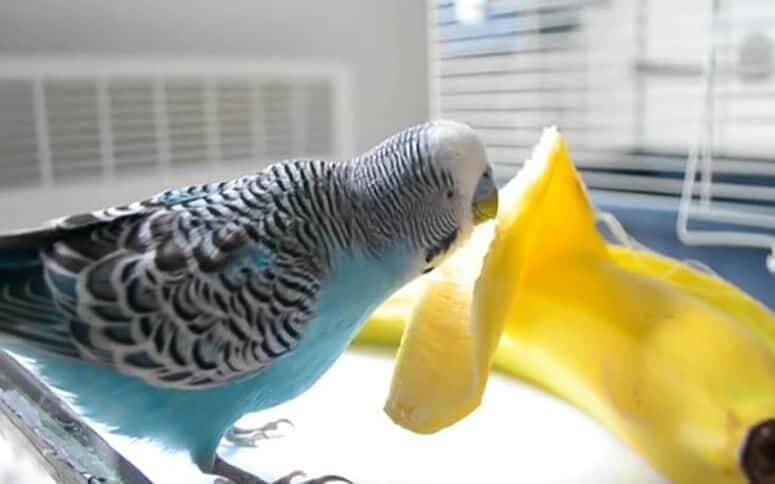
Here are the signs of a well-fed budgie:
- Healthy weight and a plump belly.
- Active, alert, and playful behavior.
- Smooth, shiny, and well-groomed feathers.
- Bright and clear eyes.
- Vibrant and true colors in plumage.
- Well-maintained beak and nails.
- Regular, well-formed droppings.
- Balanced appetite regulation.
- Social and friendly disposition.
- Regular molt without excessive feather loss.
My Budgie Diet Chart

Hey there, fellow budgie enthusiasts. My fantastic diet chart keeps my feathered friends chirpy and healthy.
Here’s how I feed my budgies:
Pellets – The Nutritional Powerhouse
About 70% of my budgies’ diet is high-quality pellets. I follow the guidelines on the pellet package to give the right amount, ensuring they get a balanced mix of all the essential vitamins and minerals.
For instance, if the package suggests two tablespoons per day, that’s exactly what they get.
Seeds – A Tasty Treat in Moderation
Seeds are like a treat for budgies. I keep it to about 20% of their daily food intake. My mix includes favorites like millet and canary grass seeds. So, they might get around one teaspoon of this seed mix each day.
Fresh Veggies – Nature’s Goodness
Every day, I offer them a variety of fresh veggies like kale, spinach, carrots, broccoli, bell peppers, and cucumber. I usually provide about a tablespoon of chopped veggies. This variety ensures they’re getting different vitamins and minerals.
Fresh Fruits – Sweet Treats
For fruits, which make up about 10% of their diet, I go for apple slices, berries, and cut grapes. A small piece of fruit per day is enough, giving them natural sugars and antioxidants.
Grains – Healthy Carbs
Once a week, I introduce cooked brown rice, quinoa, or whole wheat pasta into their diet. A small spoonful of these grains adds healthy carbs and variety.
Protein – Essential Building Blocks
Occasionally, I include a small piece of hard-boiled egg, cooked chicken, or turkey, as well as lentils. These protein sources are crucial for their overall health and wellbeing.
You can also read my other detailed article- can budgies eat hard boiled eggs?
Weekly Treats – Extra Fun
Treats like sprouted seeds, millet sprays, and fresh herbs like parsley or cilantro are given in moderation – just enough to delight them without overdoing it.
Important Notes:
- Water: I make sure they have access to fresh water 24/7. Hydration is key.
- Supplements: While their diet is well-rounded, I consult with my vet about any necessary supplements.
- Variety: I rotate their veggies and fruits, keeping their meals exciting and ensuring they get a broad spectrum of nutrients.
When To Feed Budgies
Here’s my detailed daily diet schedule that keeps my two feathered friends healthy and happy throughout the day.
| Time | Food | Quantity |
|---|---|---|
| 8:00 AM | High-quality Pellets | 2 tablespoons |
| 10:00 AM | Fresh Water (replenish) | As needed |
| 12:00 PM | Fresh Veggies (kale, carrots, bell peppers) | 1 tablespoon |
| 2:00 PM | Mix of Seeds (millet, canary grass seed) | 1 tablespoon |
| 4:00 PM | Fresh Water (replenish) | As needed |
| 6:00 PM | Fresh Fruits (apple slices, berries) | 1 tablespoon |
| 8:00 PM | Cooked Grains (brown rice, quinoa) | 1 tablespoon |
| 10:00 PM | Fresh Water (replenish) | As needed |
However, If you’re unsure about your budgie’s diet, don’t hesitate to consult a vet for personalized advice. Cheers to happy chirps and vibrant feathers
Watch the video for Budgie’s healthy diet.
Sum Up
To summarize, budgies have high metabolic rates, which require them to eat frequently throughout the day. Generally, they eat around 5 to 8 small meals comprising seeds, pellets, fruits, and vegetables.
A balanced diet and monitoring their eating habits are crucial for their overall health and well-being.
Remember to consult a veterinarian for specific dietary recommendations tailored to your budgie’s needs.
By understanding their feeding patterns, you can ensure that your budgie stays happy and healthy.
Hello Dear, I'm Poli Kolymnia, owner of many birds (including budgies).
With a deep passion for these feathered companions, I'm here to share my expertise and extensive knowledge on birds care.
My articles cover essential topics like diet, housing, care, and health, providing practical tips to help you create a happy and thriving environment for your birds.
